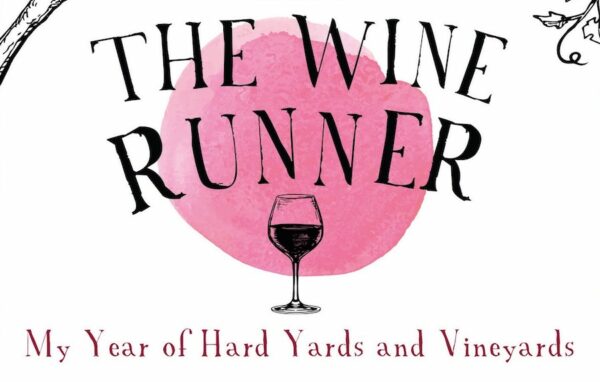The Wine Runner
"I had seen stories about the Marathon du Medoc in Bordeaux, which passes through vineyards and involves sampling some wines."
It didn’t take long for the UltraRunner Magazine team to discover Colin Renton’s new book ‘The Wine Runner’ following recommendations from our trail running aficionados.
Most of us are partial to a glass of red or white wine so imagine the amazing antioxidant benefits of combining your love for running with your love for drinking wine. Of course, why stop there when you can actually run in those dusty grape-laden vineyards doing your part for vine-checking.
Alas this isn’t a test and review. First on my list would be the Loire Valley, France’s longest wine route with over 1,000 vineyards open to the public. Now 1,000 might be a few too many to begin with and this is where Colin’s book comes in handy. He’s completed his own research and tied it into the many different running and vineyard routes across Europe, of varying lengths and terrain.
Don’t let us spoilt his fun though, Colin has personally compiled his insights into writing ‘The Wine Runner’ along with two exclusive book excerpts. We’re sure this will wet your taste buds. Just don’t book those flights or Eurotunnel pass until you’ve read it.
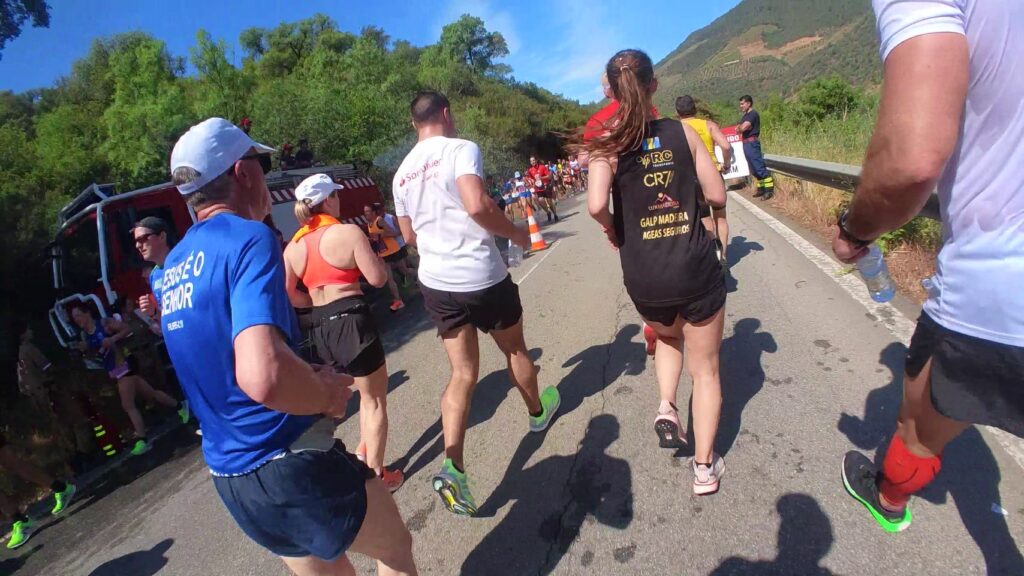
Written by Colin Renton
I’d had a few things on my to-do list for a while, but, for one reason or another, hadn’t been able to achieve them. The clock was ticking, particularly as one of the items on that list was to complete a marathon, so I decided to give up full-time work as a corporate writer just before I was 60 and focus on achieving some of my goals.
My age ruled out any hope of achieving the sub-three hour clocking that had once seemed possible. Instead, it was about having fun. I had seen stories about the Marathon du Medoc in Bordeaux, which passes through vineyards and involves sampling some wines. When I began to research the event, I discovered another race around the underground wine cellars of Moldova, then spotted one in Germany’s winemaking area near the Rhine. An idea began to ferment.
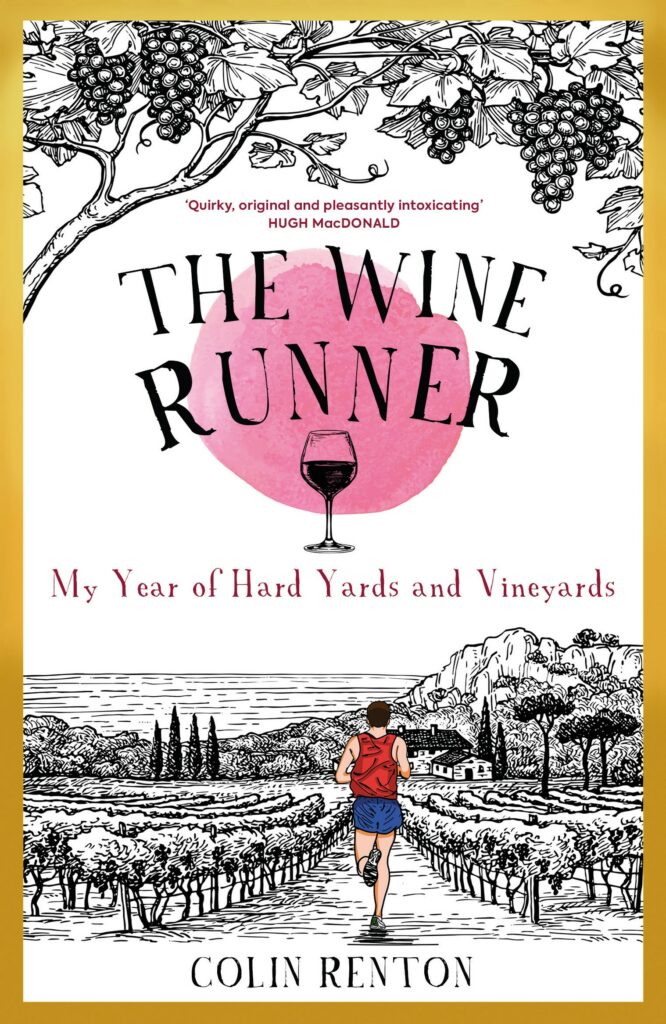
I decided to look at the possibility of competing in 12 races in 12 different countries over a 12-month period. As I checked the potential destinations, I realised that it was achievable. I then had the idea of having a wine tasting in each of the places and bringing back a bottle from each destination to create a case of wine.
It started in Switzerland with an event that featured eating and drinking while covering the half marathon distance in some breath-taking landscape. It wasn’t a massive physical test but it had its moments and eased me in to the adventure.
That changed when I got to Slovenia. It was tough but exhilarating. My next destination was Italy and a 10 kilometre event, which was testing and muddy, as well as being a showcase for some colourful local characters.
“This is one run in a wider programme of the weekend’s events in Izola that come under the umbrella of the Obala Trails series. In addition to the Martinov vinski tek, there is a choice of races over eighteen, thirty-three, sixty-three and eighty-seven kilometres.
The sight of the track-suited Slovenian national team holding a meeting in an outdoor café shortly after my arrival is a gentle reminder that, although this is a bit of fun for me, it’s a much more serious undertaking for those at the peak of their athletic careers.
Arriving at the start with plenty of time to spare, I decide to keep my legs moving with a gentle jog around the back streets. There I encounter a couple of serious-looking runners making their own final preparations. One of them – the part of his race number that is visible shows he is called Matej or something similar – looks like the kind of character that will feature at the head of the field. He is a muscular, barrel-chested powerhouse, who looks like a no-nonsense competitor.
In perfect conditions – autumn sunshine and a moderate breeze – a countdown sets the 200 or so runners entered for my race on their way. For most, the early pace is gentle, as the group proceeds along a narrow path leading to a metal bridge where the bunch clatters over in single file.
Having seen the profile before I left home, and ambled around here, I know that the first climb looms. It’s a draining hill that cuts through olive groves, each bend concealing the next seemingly interminable upward haul. Overall, it covers almost two kilometres, gaining more than 100 metres in altitude. Eventually the gradient relents and we reach the car park of a hotel, which is in the Strunjan Nature Reserve, sitting atop a cliff.
However, the climb is not quite done and I can picture race organisers chuckling to themselves as they throw in another short, sharp test. We then move away from the tarmac to a gravel path, which edges gently higher before finally, with thighs and lungs burning, I reach the top. The girl with the phone shouts to a few runners ahead that they have strayed again, and another adjustment brings them back on track.”
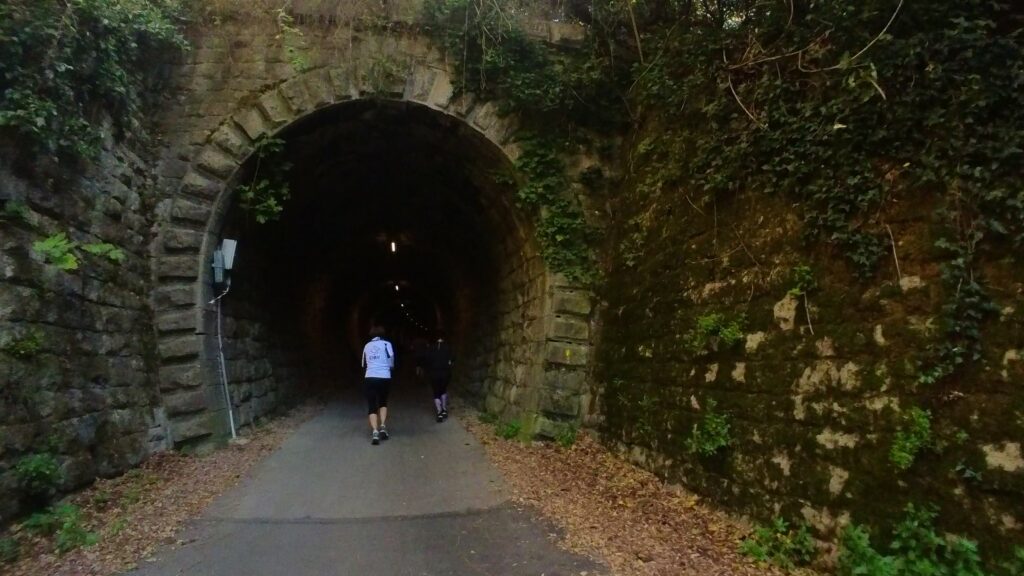
The choices for January were fairly limited. I had started to do some parkruns, which were great for measuring my fitness, and an ideal way to fill any blanks in my schedule. As it happens, there is a parkrun through the vines at Denbies Vineyard in Dorking. A fun tasting on the Friday was followed by a run on Saturday morning.
A planned trip to do the underground Moldova in February failed to materialise when the race was cancelled just as I was about to make travel arrangements. Again the parkrun network stepped in. This time I headed to Germany and a Saturday morning run alongside the Neckar river, followed by a tasting at the country’s oldest sparkling winemaker.
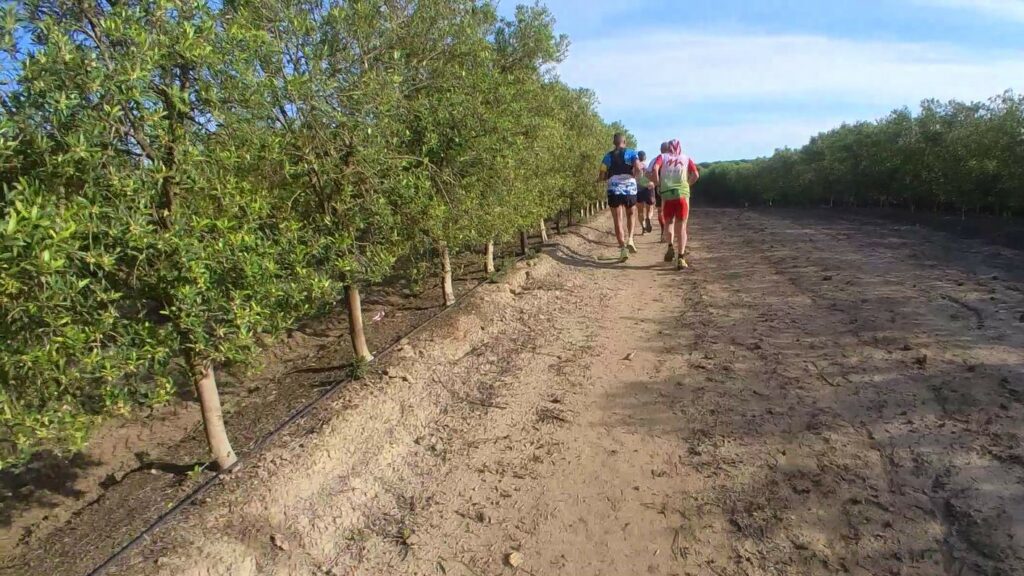
Spain was next on my agenda, and with it an opportunity to disprove many theories about sherry. It rained the day before the race, transforming the vineyards we were passing through into a quagmire and ensuring a tough outing.
The mood among the group changes a little and the chat ceases when we take a sharp left turn into the vines of La Trinidad vineyard. The albariza clay is ideal terrain for grapes and is famed for its drainage attributes, storing up the seasonal rain and allowing it to do its job as the growing season progresses. It’s less attractive as a running surface in spring, especially after yesterday’s heavy downpours. There is a name – pergaña – for the glutinous mud that attaches itself to our feet and makes a draining surface even more arduous.
As we ascend a daunting hill that takes the runners away from the roads and up to the highest vines in the area, the cloying mud adds several inches to my height. While that gives me a taste of life as a six-footer, I’m less impressed by the additional ballast, which makes raising my feet ever more exacting. I’m not alone, and the stiffness of the climb combines with the heavy conditions to quell any hope of running. Somewhere up ahead, one runner has slowed to a walk and the narrowness of the navigable space means that everyone else must do the same.
After almost two miles of struggling skywards, we finally crest the summit, which is marked by a religious sculpture. Then, as we head downhill towards the La Trinidad winery, we pass one runner, Antonio, who is facing the wrong way. He looks as if he is waiting for someone to complete that devilishly challenging climb. Or perhaps he has been spooked by the statue. Antonio’s race number is 666.
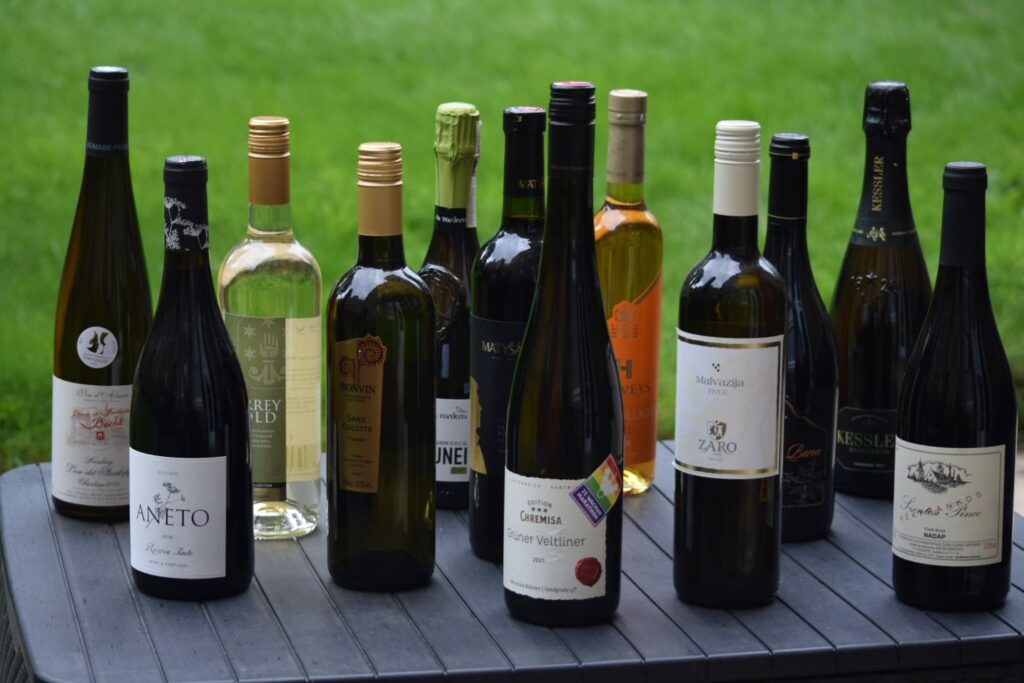
My efforts in Slovakia, a country steeped in running tradition, were hampered by an Achilles problem, and I then travelled to Portugal for a half marathon in the Douro Valley, running in soaring temperatures which were alleviated a little by local firefighters delivering water sprays.
Next up was France. It’s a country I know quite well, but I had never been to Alsace which has a fascinating history. There were various races through the local vines with winners of the marathon receiving their weight in wine, a process that was convoluted and entertaining.
Hungary was different because it was a night run through the streets of Budapest. A 10pm start meant we avoided the heat of the day – with novelty value added by wearing headtorches.
At this stage I had two races left. The first was in Belgium, which was home to a great event through the Furfooz nature reserve and alongside the River Lesse, as well as offering the chance to spend several hours in the company of a fascinating winemaker.
And so to Austria. We travelled to the start by bus – those in the half marathon could choose a boat as their mode of transport – then ran beside the Danube back to the town of Krems. It was challenging, of course, and there were plenty of difficulties. However, there were also lots of highs.
I ended my year with a case of wine that will bring back many happy memories as I share its contents with friends. And, for those who might be keen to learn a little more about my running adventure, I have recorded my tales in a book.
Adapted from The Wine Runner: My Year of Hard Yards and Vineyards, by Colin Renton, out now in paperback and ebook. Photo credits: Colin Renton.
The Wine Runner
By Colin Renton
£9.99
Polaris Publishing Ltd
More top race and vineyard picks for dedicated ultramarathoners:
- Valtellina Wine Trail in Italy (42km)
- The Medoc Marathon in France (42km)
- Alpe Adria Trail Cup Ultra XL in Slovakia (Ultra-Trail Vipava Valley -170km)
- Chianti ULTRA TRAIL in Italy (73km or 100km)
Enter our competition here:
